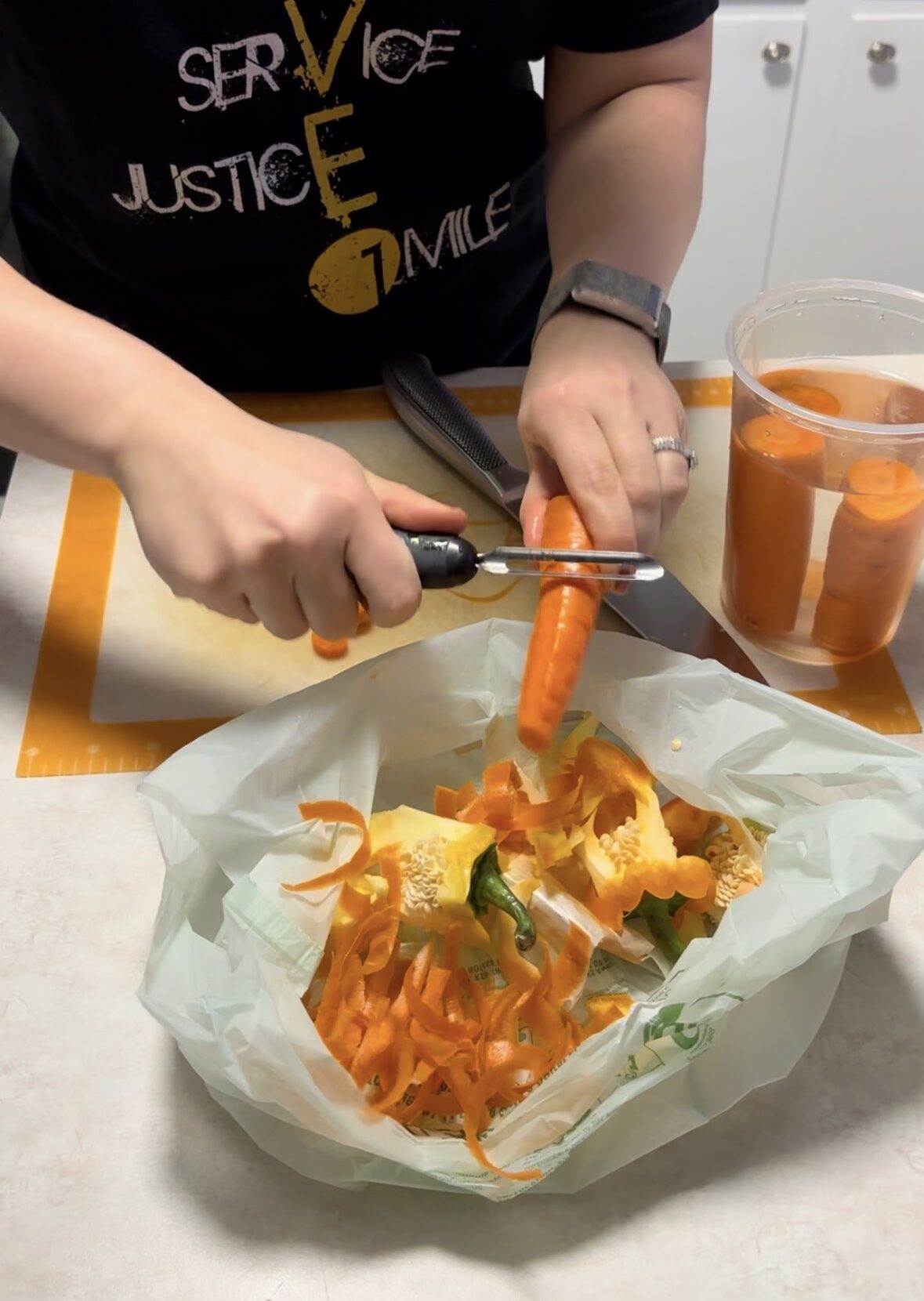Why do period products matter?
Period products are of utmost importance to our health and the environment. These products are oftentimes the most intimate that we use in our lives. It’s important to evaluate the options available to make the best choice for yourself and your family. The types of period products you use can also have a significant environmental impact. 9,000 tampons and $2,000 is the estimate of what women use and spend on period care products in their lifetime. In the United States, approximately 12 billion pads and 7 billion tampons are thrown away every single year.
The FDA does not require ingredient disclosure!
There is a lot to unpack with period products and how they relate to our health. This is particularly true because the FDA does not currently require manufacturers to disclose all production materials. The FDA makes recommendations for labeling, but makes no requirements. The FDA also only requires that companies demonstrate equivalent performance and ingredients to what’s already on the market. They do not require separate studies to prove ingredient safety prior to production and use as long as the ingredients are “equivalent.”
However, New York and California have recently passed laws requiring ingredient disclosure for menstrual products. Even though the disclosure laws only exist in two states, they are starting to have a broader impact. We have a national and global supply chain, so many companies are not making products to sell in one state only. Often times it does not make sense to maintain different packaging in different states, so many companies disclose ingredients in all states. This is particularly true if it’s an online retailer selling products to the entire country. Ingredient disclosure is critical if consumers want to make a well-informed decision about the products they use. The New York and California laws are a great step in the right direction.
Disposable product ingredient review
Let’s start with the more common products, pads and tampons, which are disposable. Obviously this is the least environmentally friendly option, but in general they are the most convenient option especially if you have a relatively heavy flow.
The primary ingredients (synthetic vs natural)
The primary material within your disposable period products is what absorbs your menstrual flow. This material can be either synthetic or natural.
- Synthetic Materials
- Rayon is primarily used in tampons. The production of rayon includes a material called “carbon disulfide” which is classified as a reproductive toxin. Testing done by Women’s Voices indicates residual presence of this material in tampons that use Rayon, but no presence of this material in tampons that use 100% cotton. Rayon is an allowable raw material per the FDA and is not a reproductive toxin on its own. The residue from the production process of rayon however is a reproductive toxin. Because the residue is at low levels, it may not meet the threshold to require disclosure in an ingredient list. The dose of a material is what makes it toxic, but because we are exposed to so many potential toxins each day it makes sense to me to limit what we can. You may choose a different approach, and that’s okay!
- Super Absorbent Polymers (SAP) are primarily used in pads to help absorb your flow. There are different polymer types available for use, but in general the major concern here is around the environment. Some polymers are biodegradable (like cellulose), but some are not. The polymer is also unlikely to be in direct contact with your skin as there should be a top sheet covering the SAP.
- Natural Materials
- Cotton is used in both tampons and pads to absorb your flow. Conventional cotton uses many pesticides and pesticide residue can be present even after processing the cotton.
- Organic cotton is again used in both tampons and pads. By purchasing 100% organic cotton tampons or pads, this prevents the majority of pesticide residue exposure. You’ll want to look for 100% OCS (organic content standard) or GOTS (global organic textile standard) certified products.
The secondary ingredients
Other materials in your disposable menstrual products are additives (intentional to perform a function) or contaminants (residue from the production process or an unintentional additive).
- Some dioxins are known to cause cancer. They are never intentionally added to menstrual products, but are a byproduct from various manufacturing processes. Dioxins are a byproduct of the ethoxylation process (any time you see the “ethoxy” word in an ingredient, it went through an ethoxylation process). Dioxins are also a byproduct of a specific type of bleaching process. Spoiler alert – most cotton is bleached to give it the pure white color you see! Luckily this elemental chlorine bleaching process that produces dioxins is mostly obsolete from the cotton production process. One study indicated that the amount of dioxin in pads and tampons is negligible compared to dioxin exposure in the food we eat. But if you want to avoid dioxins in this area regardless, you’ll want to ensure your menstrual products do not have ethoxylated ingredients and are “ECF” – elemental chlorine free.
- Chlorine is another material in the bleaching process to make your cotton look whiter. Sodium hypochlorite is a popular bleaching method that is less environmentally friendly than hydrogen peroxide bleaching. To avoid chlorine (i.e. hypochlorite bleaching), you’ll want to ensure your menstrual products are “TCF” – total chlorine free. TCF also means elemental chlorine is not used (see point #1 above).
- BPA and phthalates are other potential additives you could be exposed to in tampons. Both of these materials are plasticizers, which means they can make plastic easier to form into the shape needed. If you use a tampon with a plastic applicator, it could have a plasticizer in it. To avoid these plasticizers, you can look for companies that advertise BPA-free and phthalate-free applicators, you could use a cardboard applicator, or you could use tampons without an applicator.
Reusable product ingredient review
If you’re looking for a more environmentally friendly option, a menstrual cup, menstrual disc, and/or period underwear are your best options.
Starting with a menstrual cup or disc, the majority of popular brands use medical grade silicone. What does “medical grade” mean? In this case, it just means the type of silicone that was purchased to be formed into a menstrual cup was tested for biocompatibility. Biocompatibility is a fancy term for a test that indicates if a material is compatible with the human body. When looking for a menstrual cup or disc I would highly recommend searching for only medical grade silicone. Medical grade materials go through more rigorous testing before marketing it as such. Check with the manufacturer, but generally menstrual cups or discs can be used for about 10 years! This will significantly reduce the environmental impact of your period.
Period underwear is another great option if you’re concerned about leaks or if you have a lighter flow. Period underwear are growing in popularity and are essentially an absorbent pair of underwear that you can wash and reuse to avoid the waste that comes with tampons and pads. You may have heard about the popular period underwear company, Thinx, that was sued for marketing their period underwear as free of harmful chemicals. Upon third party lab testing, multiple parties found high quantities of per- and/or polyfluoroalkyl substances (PFAS), also known as “forever chemicals”, in their period underwear. Mamavation, a consumer activist that does third party testing on many products, has also done testing on period underwear brands specifically for fluorine, an indicator of PFAS chemicals.
How to choose the best option for your individual needs?
I know that was a lot of information but let’s dig into how you can make the best choice for YOU. First, think about making the choice between disposables and reusables. While reusables are clearly the more environmentally friendly option, I understand they’re not for everyone. I have tried a menstrual cup and period underwear, but I prefer pads and tampons especially when I’m spending the majority of my time outside my home. If you choose disposables, the 100% cotton with no extra ingredients period products are certainly going to be more expensive. At the time of writing this post, they’re approximately double the cost of the standard brands you’ll find in grocery stores. Maybe it’s not worth the cost to you to buy specialty products right now. That’s okay. The way I approach buying these products is like it’s an investment in my health and well-being. I choose products that are organic and have fewer ingredients because that’s what I’m most comfortable with.
If budget is a constraint AND you want to prioritize buying the specialty products, maybe give reusable options another thought. This is not only more environmentally friendly, but it can save you a lot of money in the long run! While I have already admitted I primarily use disposable products, I’m committing today to try a new menstrual cup (from what I’ve heard, it can take a few tries to find the brand that fits your body best) and I’m committed to replacing my PFAS-era Thinx period underwear with period underwear from a company that I can trust.
Responsible options for disposable products
In summary, if you’re going to choose disposable products, here’s what you should look for when purchasing your pads and tampons if you want to lower your overall exposure to possible toxins:
- Choose 100% OCS (Organic Content Standard) or GOTS (Global Organic Textile Standard) certified organic cotton tampons and pads.
- This means you won’t have to worry about pesticide residue from conventional cotton or reproductive toxins from synthetic rayon.
- Choose Total Chlorine Free (TCF) rather than Elemental Chlorine Free (ECF). Elemental chlorine bleaching is the “worst” of the options, but the best option is using no chlorine at all in the bleaching process. By choosing TCF this will ensure no chlorine was used in the production of the ingredients used in your product.
- Be cautious of any other ingredients like Fragrance, PEG’s, Ethoxylated ingredients, Titanium Dioxide, Pigments, etc. Some additives are harmful themselves, some additives can have residual harmful contaminants, and some additives do not have enough data to determine if they are harmful. I personally try to avoid all “extra” ingredients but make the choice that’s best for you and your budget!
If you’re looking for specific brands to use, I cannot personally recommend the performance of all of these brands as I’ve only tried a handful. These are recommendations purely based on a review of the ingredients they disclose. I personally have used Lola, Cora, and Rael but I prefer the performance of Rael tampons and Rael pads!
The best of the best brands that meet ALL of the above requirements are: Live Better (CVS brand), Livlit (this brand only offers pads), Natracare, OI Girl, and Viv for your V.
The better than standard brands that I would still recommend are: Cora, Lola, Rael, and Seventh Generation. All of these brands use super absorbent polymer in their pads which is less environmentally friendly.
Responsible options for reusable period products
In summary, if you’re going to choose reusable options, here’s what you should look for.
- For menstrual cups and discs, prioritize medical-grade silicone.
- For reusable period underwear, prioritize a company that tests their products for fluorine to ensure their supply chain is not contaminated with potentially harmful PFAS substances.
If you’re looking for specific brands to use, I cannot recommend any of these personally! Companies have slightly different designs for menstrual cups and discs and everyone’s body is different. Some reputable brands are Cora, Diva, June, and Saalt. My sister recommends Saalt and I’ve heard various recommendations for the other brands mentioned. All are made out of medical grade silicone. If you want to try a menstrual cup but don’t know which option to go with, check out Period Nirvana’s Menstrual Cup Quiz.
If you are using any products from the Diva brand, there is a recycling program through TerraCycle to recycle your menstrual cup or disc at the end of its life. I actually own a Diva cup that I plan to recycle because it just didn’t work well for me.
For period underwear, this may also take some trial and error based on different companies designs, how heavy your flow is, and how long you intend to wear your period underwear. Some of the best brands that don’t contain any fluorine per Mamavation’s recent testing are Lilova, Aisle, Period, ModiBodi, Saalt, and Revol.
Are you going to change up your period care routine?
When I was first looking into hormone health, I couldn’t use any of the organic cotton brands because they didn’t make a high enough absorbency for my flow. As I learned more about hormone health and started making changes to my eating habits and personal care products, my periods gradually became lighter and easier to manage, so I was able to switch to a brand with ingredients I trusted.
I currently use Rael for my period products, but am in search of a new menstrual cup and new period underwear to decrease waste and be more responsible. I’m committing to trying a new brand of each by the end of this year, and I’ve already bought my new Saalt cup! Anyone else with me?
SOURCES:
- https://pubmed.ncbi.nlm.nih.gov/31945693/
- https://www.consumernotice.org/news/pfas-thinx-lawsuit/
- https://www.ncbi.nlm.nih.gov/pmc/articles/PMC1240689/pdf/ehp0110-000023.pdf
- https://womensvoices.org/menstrual-care-products/whats-in-your-tampon/
- https://womensvoices.org/wp-content/uploads/2022/05/label_report_period_products_ENGLISH_final.pdf
- https://www.sciencedirect.com/science/article/pii/S0160412019333859?via%3Dihub
- https://onlinenursing.duq.edu/master-science-nursing/the-ultimate-guide-to-feminine-hygiene/
- https://stanfordmag.org/contents/planet-friendly-periods#:~:text=Let’s%20revisit%20the%20environmental%20impact,of%20plastics%20in%20our%20oceans.
- https://www.sciencedirect.com/topics/materials-science/biocompatibility
- https://www.mamavation.com/health/period-underwear-contaminated-pfas-chemicals.html#Not_Our_Favorite_Period_Underwear_Brands
- https://www.fda.gov/regulatory-information/search-fda-guidance-documents/menstrual-tampons-and-pads-information-premarket-notification-submissions-510ks-guidance-industry
- https://www.fda.gov/consumers/consumer-updates/facts-tampons-and-how-use-them-safely











